Beet Kvass
The humble beet. Sadly passed over by those of us with the unfortunate association of the canned, admittedly slimy, preparation. While its green tops glow bright and veiny, its vibrant root flesh remains hidden, modestly covered by a dusty layer of earth. But beneath that soily sweater is a gem of a vegetable; sweet, versatile, and wildly nutritious.
In our overly sterile society, we consider dirt to be an inconvenience; an invader that must be eliminated, instead of the life giving substance that it is. All life comes from the earth, and despite our attempts to completely eliminate it from the produce we consume, the little bit that makes it to our plates is actually a good thing.
Dirt. it’s good eatin’.
I once took a food safety class. The instructor (an obvious stickler for sanitation) revealed that he washed his own lettuce in a sink full of water enhanced with a capful of bleach. BLEACH. Because ingesting bleach seemed like less of a risk to him than the invisible bacteria that might be living between the leaves of his lettuce. But as we’re slowly beginning to discover, that bacteria has some real benefits, and it seems as though nature actually intended for us to get a dose of it every now and then.
When placed in the right environment, those beneficial bacteria found on plants plucked straight from the earth will begin the process of fermentation– a process that not only preserves the nutrients in food, but multiplies them as well.
Some of the best things in life are fermented
Fermented beverages have been consumed for centuries, by cultures spread throughout all far reaches of the earth. While most of us can appreciate the fermentation that gets us to our wine glass or beer mug, we don’t often think about the real reason these types of drinks came to be.
So, what is kvass?
Kvass is an ancient fermented beverage consumed in Eastern Europe, namely Russia and the Ukraine. Traditionally, kvass was made from stale bread, because wasting any amount of food wasn’t an option. This creative frugality meant that the drink was massively popular among the lower class, but its popularity rose throughout the region, until it was replaced in recent years by Western soft drinks. (There is a push to bring back the old bubbles, fortunately)
How to make a good thing better.
Kvass can also be made from beets, producing a fermented tonic that is earthy, vibrantly colored, and potently healthy. Although beets often get overlooked in the produce isle, they are incredibly nutritious. They contain active compounds that help to lower blood pressure, assist in detoxification support, and fight inflammation. The phytonutrients that give beets their deep color work to kick cancer’s ass also, and beetroot extract is currently being studied for use in treating human pancreatic, breast, and prostate cancers.
Like other traditionally fermented foods and beverages, kvass is full of beneficial bacteria which provide probiotics that are crucial for health, particularly gut health. Beet kvass doesn’t ferment into alcohol however, and is intended as a health tonic that can be consumed on its own or used like vinegar and added to salad dressings and soups. I like to add tumeric to my kvass because of its impressive resume of health benefits. The bright orange root spice has been used medicinally for thousands of years as a preventative measure for a wide range of diseases. In fact, it has been shown to be as effective as 14 separate pharmaceuticals including Lipitor, Prozac, and Aspirin.
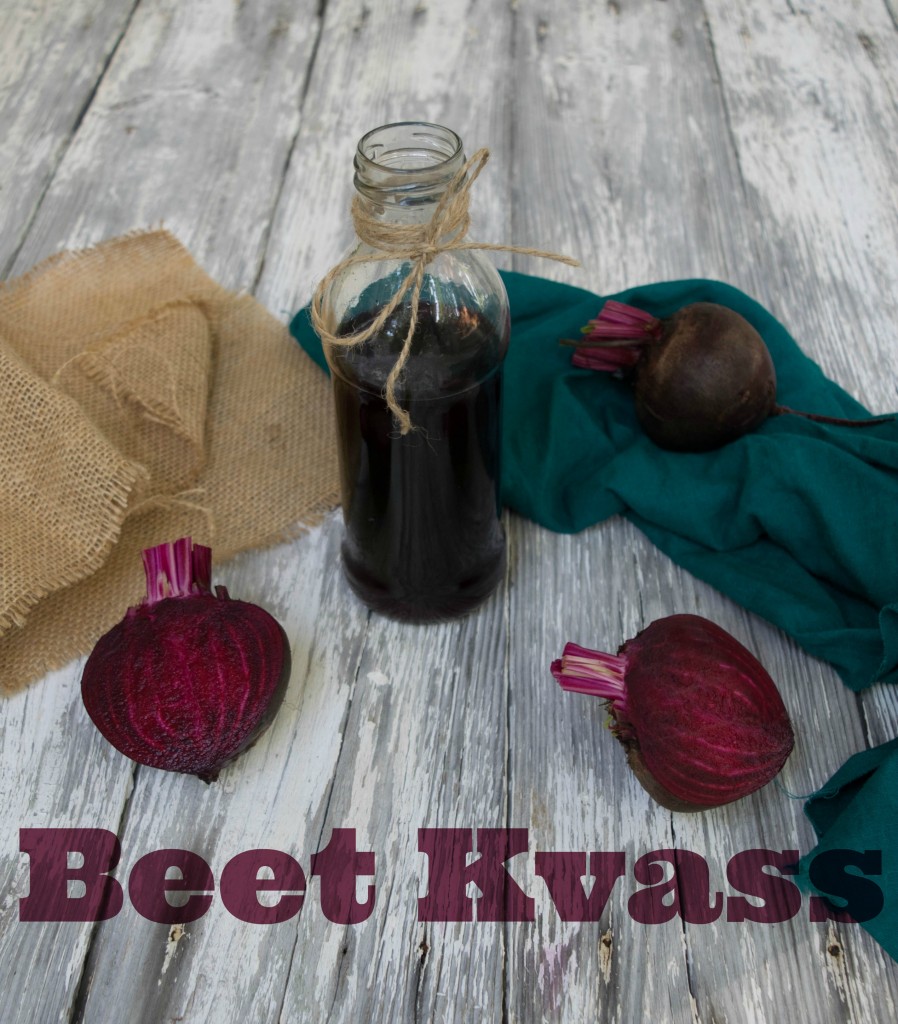

- 3 medium or 2 large organic beets
- a few knobs of turmeric
- 1 tbs real salt
- 1/4 cup whey*
- Wash beets to remove the sandy dirt. Remove tops (Don't throw them away! They are delicious and can be cooked like spinach)
- Dice beets into cubes. It's not necessary to peel the beets first.
- Peel and chop turmeric.
- Add salt to a cup of warm filtered water and stir until dissolved. Add whey, kraut juice, or additional salt. Place beets and turmeric in a glass container. Add liquid, and continue to fill container with water until beets are covered.
- Drape a towel over container (you can secure in place with a rubber band) and keep in a warm spot on the counter for 2-5 days. Temperature will determine how fast or slow your kvass ferments. At the end of the 2-5 days you may find a white film on the surface of the kvass. Simply skim this off, cover container with a lid, and keep stored in refrigerator.
- Enjoy beet kvass as a health tonic- a few ounces in the morning, or as a replacement for vinegar in salads and soups.
Cheers to good health!
Recipe adapted from Sally Fallon’s Nourishing Traditions.


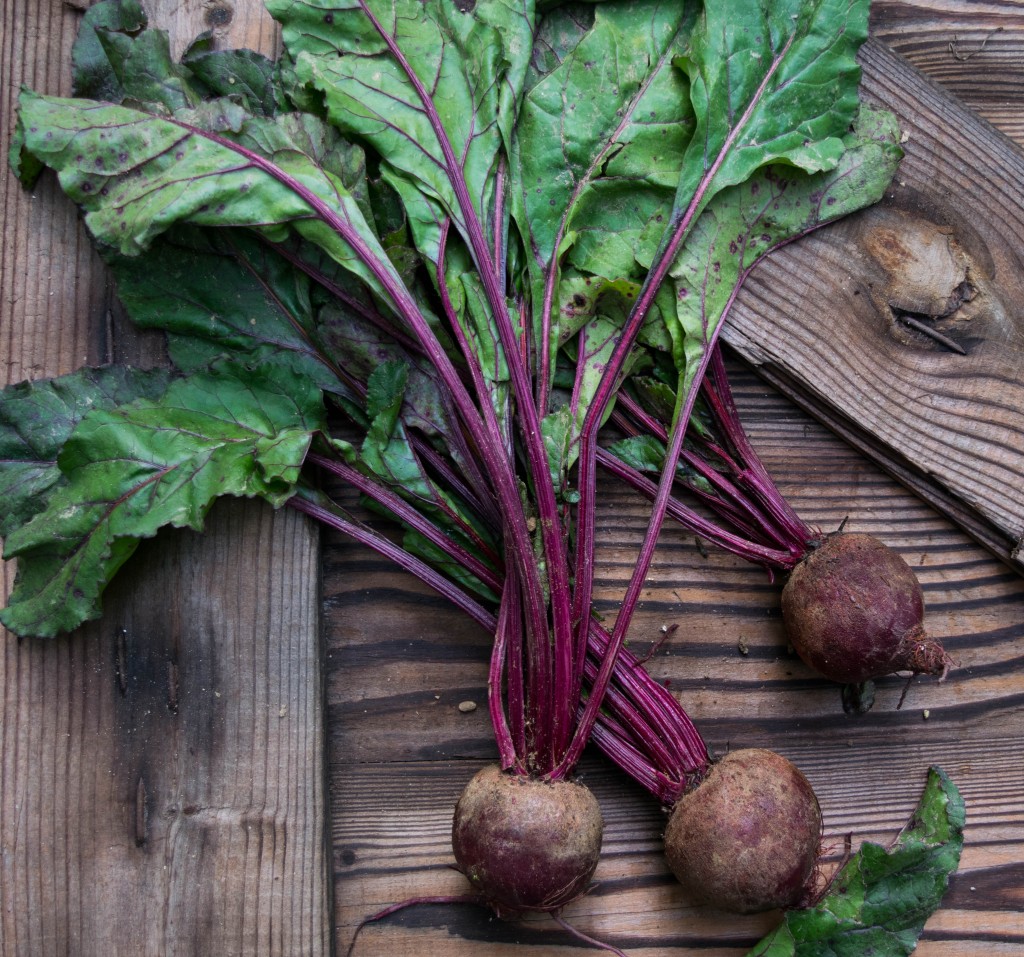
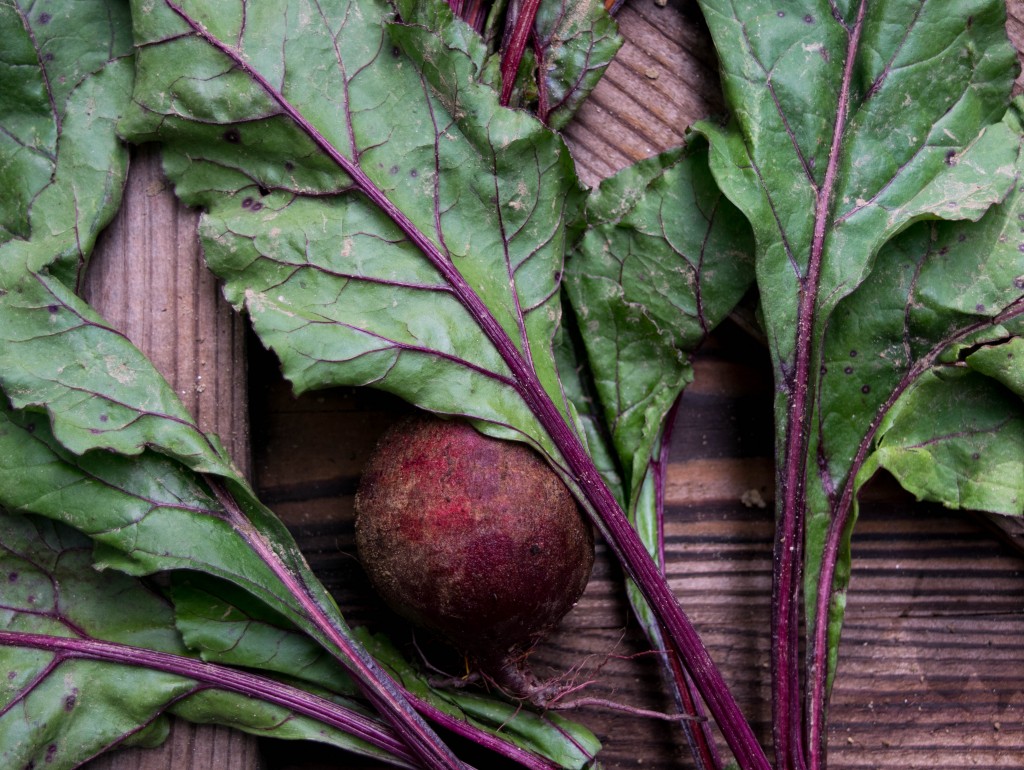
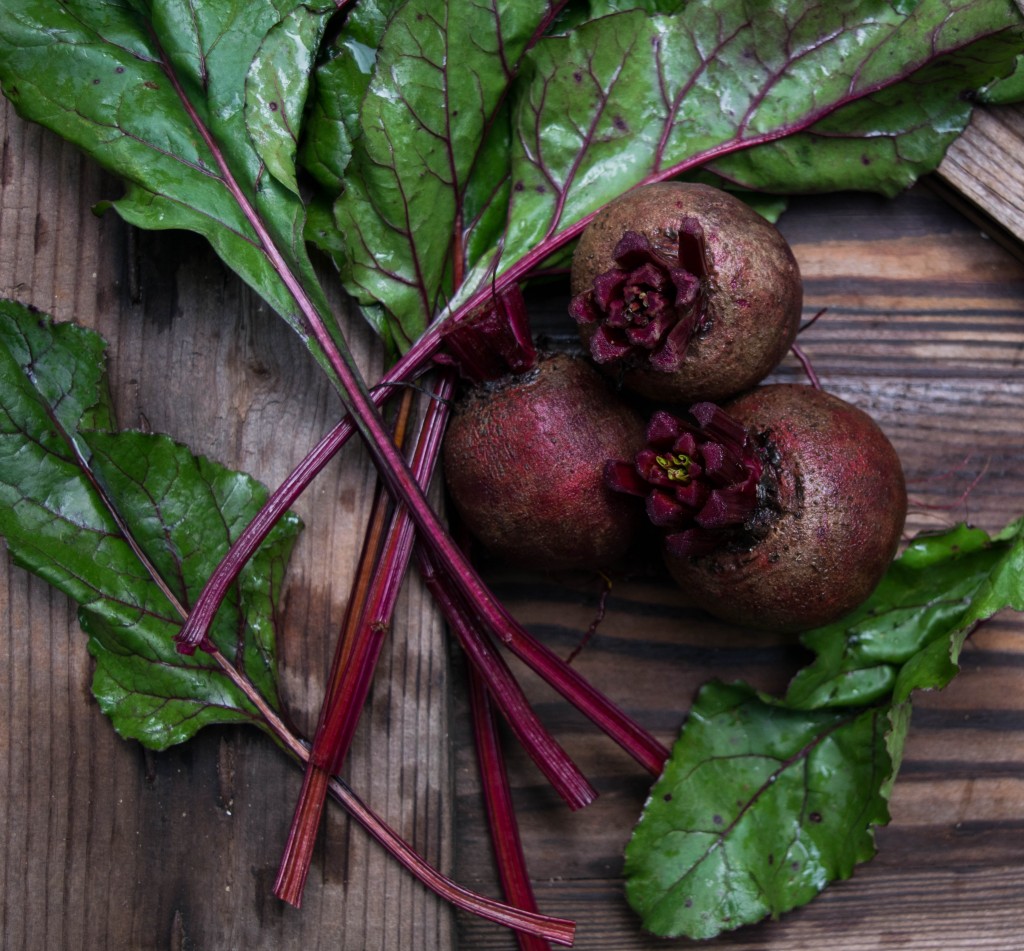
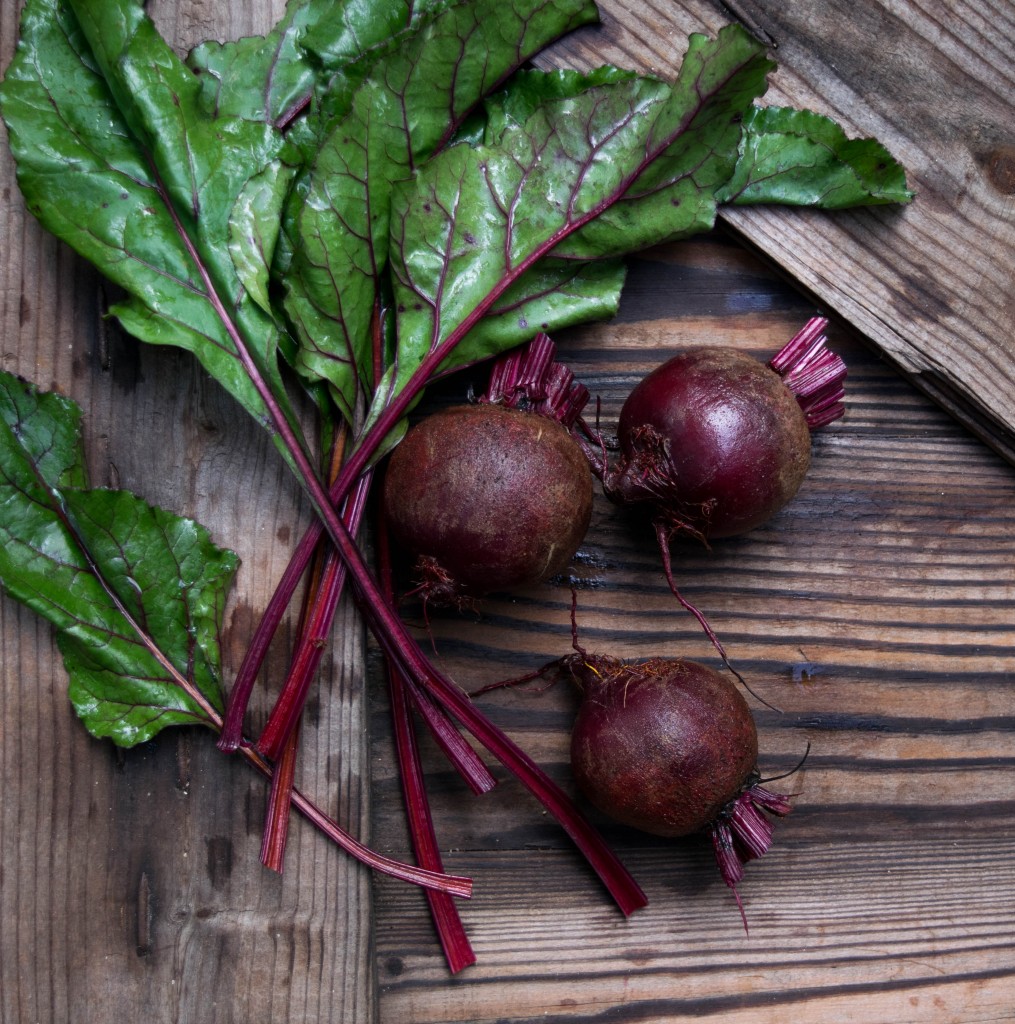
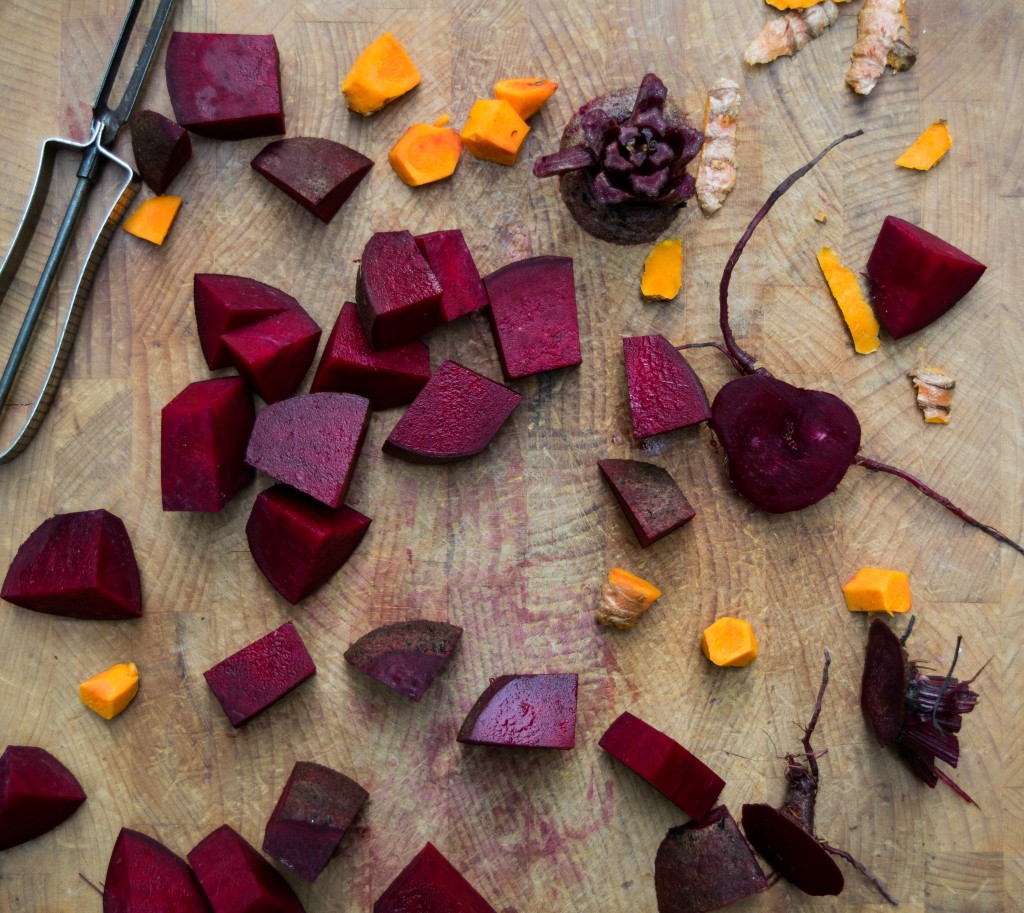
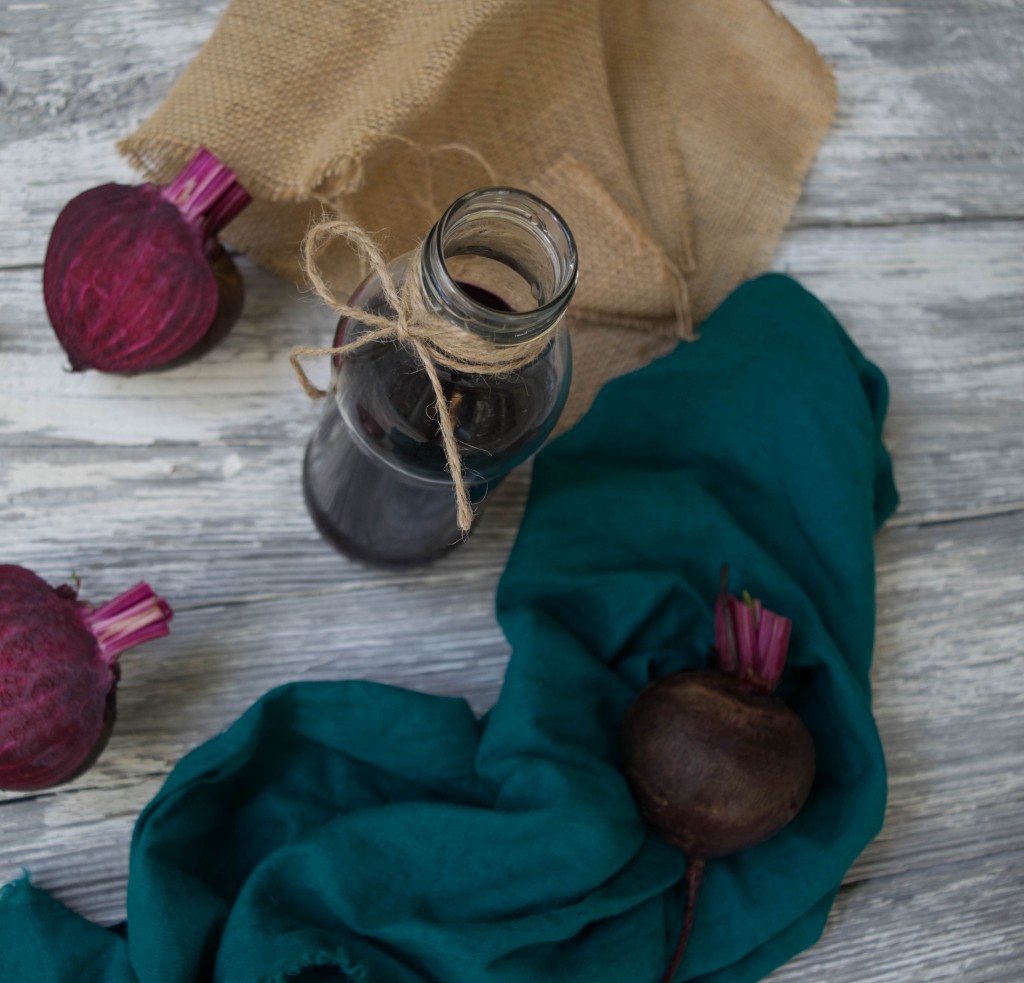
[…] Reclaiming Yesterday: Beet Kvass […]
I love beets! Beautiful pictures!!